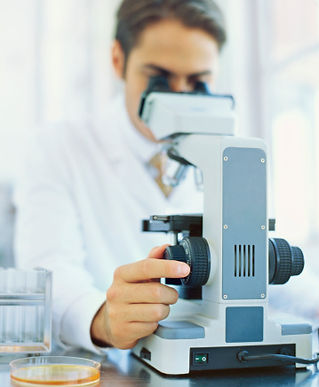
Cells Produce Energy
CELLS PRODUCE ENERGY
How does food energy become our body’s energy?
On a daily basis we acquire energy from foods in the form of carbohydrates, protein, fat, and alcohol. However, we cannot use the energy from these molecules directly; they must first engage in chemical reaction pathways that break them down to capture some energy in so-called “high-energy molecules.” By far, the most important high-energy molecule is adenosine triphosphate or, more commonly, ATP.
Interestingly, not all of the energy released in the breakdown of carbohydrates, protein, fat, and alcohol is incorporated in ATP. It seems that we are able to capture only about 40 to 45 percent of the energy available in those molecules in the formation of ATP. The remaining 55 to 60 percent of the energy is converted to heat, which helps us maintain our body temperature. The final product of the chemical reaction pathways that breakdown carbohydrates, proteins, fat, and alcohol is primarily carbon dioxide, which we then must exhale, and water, which helps keep our body hydrated.
Looking at the ATP molecule, we notice what looks like a phosphate tail. Phosphate is made up of phosphorus (P) bonded to oxygen (O) and, as indicated in its name, ATP contains three phosphates. The energy liberated during the breakdown of energy nutrients is used to link phosphates together to make ATP. These phosphate links are thus little storehouses of energy. When energy is needed, special enzymes in our cells are able to break the links between adjacent phosphate groups. This releases the energy stored within that link, which can be harnessed to drive a nearby energy-requiring reaction or process.
Where is ATP made in cells?
ATP is made in our cells by capturing some of the energy released from energy molecules when they are broken down in energy pathways. Most of the ATP made in our body is made in mitochondria (singular: mitochondrion). For this reason mitochondria are often referred to as the “powerhouses” of our cells. A relatively small portion of the ATP generated in our cells each day will be made in the intracellular fluid outside the mitochondria. As you might expect, cells with higher energy demands will have more mitochondria. This is certainly true for heart and skeletal muscle cells and cells within our liver.
What does the term metabolism mean?
Each and every second of every day our cells are engaged in the operations that help keep them alive and well. At the same time the efforts of each cell also contribute to the proper functioning of our body as a whole. To do so each cell must perform an incredible number of chemical reactions every second. The term metabolism refers to those chemical reactions collectively.
The term metabolism is somewhat general. For instance, total body metabolism refers to all the energy released from all the chemical reactions and associated processes in our body. Said differently, total body metabolism is the total of all reactions taking place in each cell added together. However, if we wanted to describe just those chemical reactions within a specific tissue, such as muscle or bone, we would say “muscle metabolism” or “bone metabolism.” We can be even more focused and use the term metabolism to describe only those reactions associated with a single nutrient or nutrient class. For example, if we were discussing the chemical reactions that involve only proteins or carbohydrates, we would be discussing protein or carbohydrate metabolism, respectively.
In general, chemical reactions and/or pathways will release energy. Ultimately, this extra energy will be converted to heat. Since body temperature remains fairly constant, the heat produced in metabolism must be removed from our body. Therefore, our total body metabolism can be estimated by measuring how much heat is lost from our body. Researchers can do this in specialized laboratory facilities.
Cells, Metabolism + Energy




